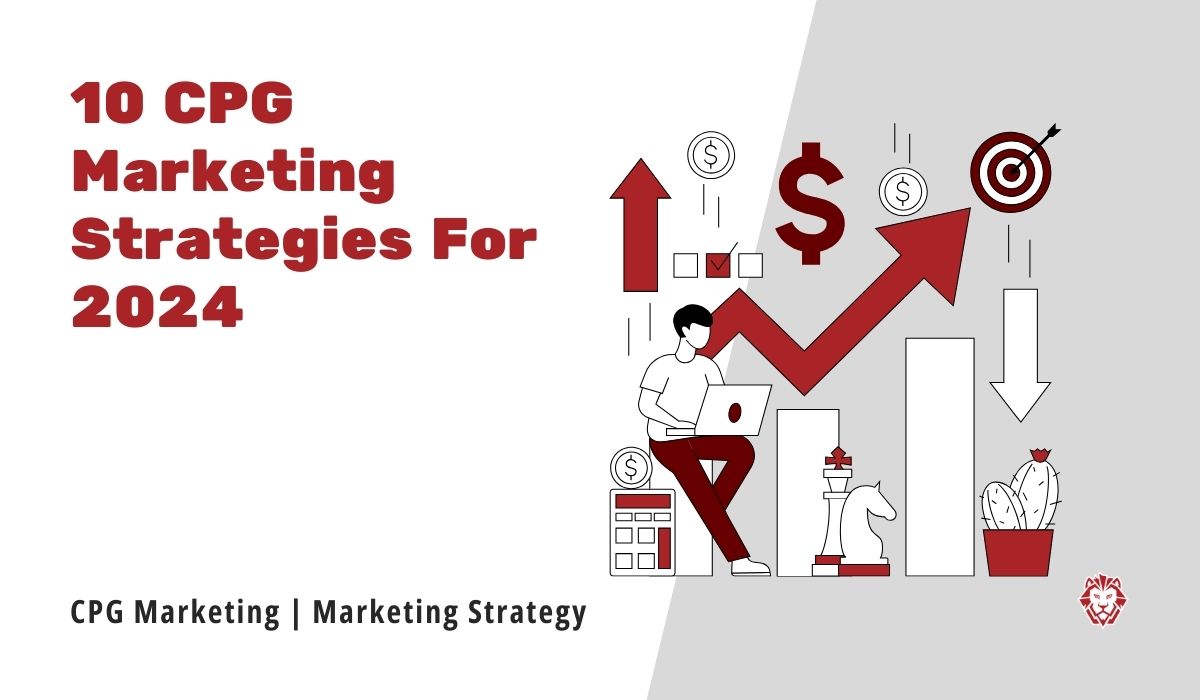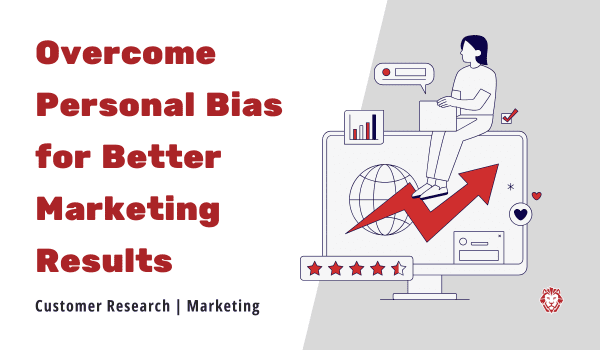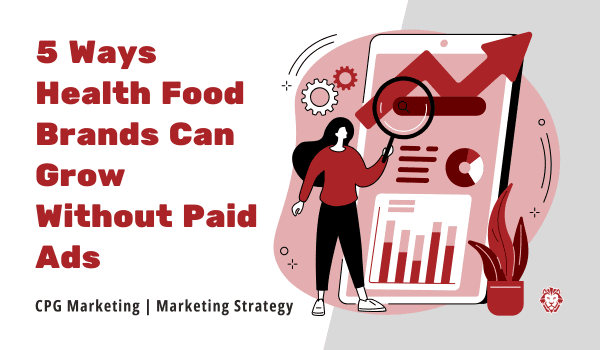
10 CPG Marketing Strategies For 2024
10 CPG Marketing Strategies For 2024
In the fast-paced world of consumer packaged goods (CPG) marketing, staying ahead of the curve is crucial. As we approach 2024, it’s more important than ever to adapt and evolve our strategies to meet the changing needs and preferences of consumers. In this article, we will explore 10 CPG marketing strategies that are poised to make a big impact in the coming years.
Understanding CPG Marketing
Before we dive into the strategies, let’s first understand the concept of CPG marketing. CPG refers to a wide range of consumer goods that are used daily, such as food, beverages, personal care products, and household items. CPG marketing focuses on promoting and selling these products to consumers through various channels and tactics.
CPG marketing is a dynamic and ever-evolving field that requires a deep understanding of consumer behavior, market trends, and effective communication strategies. It involves a comprehensive approach to reach and engage consumers, with the ultimate goal of driving sales and building brand loyalty.
The Importance of CPG Marketing
CPG marketing plays a crucial role in the success of brands and products. It helps to create awareness, build brand equity, and drive sales. In today’s highly competitive market, where consumers are constantly bombarded with countless options, effective marketing strategies are vital for CPG companies to cut through the noise and connect with their target audience.
One of the key reasons why CPG marketing is important is because it helps to differentiate brands from their competitors. With so many similar products available, it is essential for companies to create a unique selling proposition that sets them apart. Through strategic marketing efforts, CPG brands can effectively communicate their value proposition and establish a strong position in the market.
Furthermore, CPG marketing enables companies to build brand equity, which is the intangible value associated with a brand. Strong brands have loyal customers who are willing to pay a premium price for their products. By consistently delivering on their brand promise and engaging consumers through effective marketing campaigns, CPG companies can cultivate brand loyalty and drive long-term success.
Key Elements of CPG Marketing
Successful CPG marketing campaigns typically incorporate several key elements. These include strong branding, targeted messaging, engaging content, innovative packaging, and strategic distribution. Let’s take a closer look at each of these elements:
- Strong Branding: A strong brand identity is essential for CPG companies to stand out in the market. It involves creating a unique and memorable brand name, logo, and visual identity that resonates with consumers. Strong branding helps to build brand recognition and trust, making it easier for consumers to choose a particular product over its competitors.
- Targeted Messaging: CPG marketing requires a deep understanding of the target audience. By conducting market research and consumer analysis, companies can identify the needs, preferences, and pain points of their target customers. This information is then used to develop targeted messaging that speaks directly to the audience, addressing their specific needs and positioning the product as the solution.
- Engaging Content: In today’s digital age, content is king. CPG companies need to create compelling and relevant content that captures the attention of consumers. This can include informative blog posts, engaging social media posts, entertaining videos, and interactive quizzes or games. By providing valuable content, CPG brands can establish themselves as thought leaders and build a loyal following.
- Innovative Packaging: Packaging plays a crucial role in CPG marketing. It not only protects the product but also serves as a powerful marketing tool. Innovative and eye-catching packaging designs can attract consumers and differentiate the product from its competitors. CPG companies need to consider factors such as functionality, aesthetics, and sustainability when designing their packaging.
- Strategic Distribution: Effective distribution is essential for CPG companies to ensure that their products reach the right consumers at the right time. This involves selecting the appropriate distribution channels, such as supermarkets, convenience stores, online platforms, or direct-to-consumer models. By strategically placing their products in locations where their target audience is likely to shop, CPG brands can maximize their reach and increase sales.
By combining these key elements, CPG brands can create a compelling marketing strategy that resonates with consumers and drives results. However, it is important to note that the CPG marketing landscape is constantly evolving, with new technologies, trends, and consumer behaviors emerging. To stay ahead of the competition, CPG companies need to continuously adapt their marketing strategies and embrace innovation.
Future Trends in CPG Marketing
Now that we have a solid foundation, let’s take a look at some of the future trends that will shape the world of CPG marketing in 2024.
Predicted Changes in Consumer Behavior
Consumer behavior is constantly evolving, and staying ahead of these changes is vital for CPG marketers. In 2024, we can expect to see consumers placing a greater emphasis on sustainability, health-consciousness, and convenience. Brands that can align with these changing trends will have a significant advantage.
When it comes to sustainability, consumers are becoming more aware of the environmental impact of their purchasing decisions. They are actively seeking out products that are eco-friendly, made from recycled materials, or produced using renewable energy sources. CPG marketers will need to adapt their strategies to highlight the sustainable aspects of their products, such as using packaging that is easily recyclable or promoting their commitment to reducing carbon emissions.
Health-consciousness is another key trend that will shape CPG marketing in 2024. Consumers are increasingly focused on their well-being and are seeking out products that support a healthy lifestyle. This includes a demand for natural and organic ingredients, as well as products that cater to specific dietary needs, such as gluten-free or vegan options. CPG marketers will need to emphasize the health benefits of their products and provide transparent information about ingredients and nutritional value to meet the expectations of these health-conscious consumers.
Convenience is a factor that has always played a role in consumer behavior, but in 2024, it will become even more important. With busy lifestyles and the rise of e-commerce, consumers are looking for products that offer convenience in terms of accessibility, ease of use, and delivery options. CPG marketers will need to optimize their online presence, ensuring their products are easily discoverable and available for purchase through various digital channels. Additionally, brands that can provide innovative packaging solutions or time-saving features will be able to capture the attention of consumers seeking convenience.
Technological Innovations in CPG Marketing
Technology continues to revolutionize the way we do business, and CPG marketing is no exception. In the coming years, we can expect to see advancements in areas such as AI, machine learning, augmented reality, and data analytics. These innovations will enable brands to deliver more personalized and immersive experiences to their customers.
Artificial Intelligence (AI) and machine learning algorithms will play a crucial role in CPG marketing in 2024. These technologies will allow brands to analyze vast amounts of consumer data, enabling them to gain valuable insights into consumer preferences, behaviors, and purchasing patterns. With this information, CPG marketers can create highly targeted marketing campaigns, personalized product recommendations, and tailored messaging that resonates with individual consumers.
Augmented reality (AR) will also become more prevalent in CPG marketing. Brands will leverage AR technology to provide virtual product experiences, allowing consumers to visualize how a product would look or fit into their lives before making a purchase. This immersive and interactive approach will enhance the consumer’s shopping experience and increase engagement with the brand.
Data analytics will continue to be a crucial tool for CPG marketers in 2024. By harnessing the power of data, brands can gain a deeper understanding of their target audience, identify trends, and measure the effectiveness of their marketing campaigns. This data-driven approach will enable CPG marketers to make more informed decisions and optimize their strategies for maximum impact.
In conclusion, the future of CPG marketing in 2024 will be shaped by changing consumer behavior and technological innovations. Brands that can adapt to the growing emphasis on sustainability, health-consciousness, and convenience will have a competitive edge. Furthermore, leveraging AI, machine learning, augmented reality, and data analytics will enable CPG marketers to deliver personalized and immersive experiences that resonate with consumers. As the landscape continues to evolve, staying ahead of these trends will be crucial for success in the CPG industry.
Detailed Overview of 10 CPG Marketing Strategies
Strategy 1: Personalization
Personalization has become a buzzword in the marketing industry, and for good reason. In 2024, brands that can deliver highly personalized experiences to their consumers will stand out from the crowd. Utilizing customer data and technology, brands can tailor their messaging, recommendations, and offers to each individual, creating a more meaningful and impactful connection.
Strategy 2: Omnichannel Marketing
In today’s digital age, consumers expect a seamless shopping experience across multiple channels. Omnichannel marketing involves integrating all touchpoints, both online and offline, to provide a cohesive and consistent brand experience. By leveraging data and technology, brands can deliver personalized messaging and offers at each touchpoint, driving engagement and sales.
Strategy 3: Leveraging Data Analytics
Data analytics is a powerful tool that enables brands to gain valuable insights into consumer behavior and preferences. In 2024, brands that can effectively collect, analyze, and act upon data will have a competitive advantage. By understanding their target audience and monitoring key metrics, brands can refine their marketing strategies and make data-driven decisions.
Strategy 4: Sustainability and Ethical Marketing
As consumers become more environmentally and socially conscious, sustainability and ethical marketing will play a significant role in 2024. Brands that prioritize sustainable practices, such as using eco-friendly materials and supporting social causes, will resonate with consumers and foster long-term loyalty.
Strategy 5: Influencer Marketing
Influencer marketing has become a powerful tool for brands to connect with their target audience. In 2024, brands will continue to leverage the reach and influence of social media influencers to promote their products. By partnering with influencers who align with their brand values and target demographic, brands can generate authentic and engaging content that drives awareness and sales.
Strategy 6: Experiential Marketing
In the age of social media and digital distractions, creating memorable experiences for consumers is more important than ever. Experiential marketing involves creating immersive and interactive brand experiences that go beyond traditional advertising. By engaging multiple senses and creating shareable moments, brands can leave a lasting impression on their audience.
Strategy 7: Social Media Engagement
Social media continues to be a powerful platform for CPG marketing. In 2024, brands that can effectively engage their audience through social media will have a competitive edge. By creating compelling content, running interactive campaigns, and fostering meaningful conversations, brands can build a loyal and engaged community of followers.
Strategy 8: Content Marketing
Content marketing has proven to be an effective strategy for engaging consumers and building brand authority. In 2024, brands that can consistently produce high-quality and valuable content will differentiate themselves from the competition. By offering educational, entertaining, and informative content, brands can position themselves as trusted experts and drive customer loyalty.
Strategy 9: Mobile Marketing
With the majority of consumers now using smartphones, mobile marketing is essential for reaching and engaging with your target audience. In 2024, brands that can deliver mobile-optimized experiences, such as mobile apps and responsive websites, will have a distinct advantage. By leveraging the power of mobile technology, brands can stay connected with their customers wherever they go.
Strategy 10: AI and Machine Learning
The advancements in AI and machine learning have opened up exciting possibilities for CPG marketing. In 2024, brands that can harness the power of AI and machine learning to automate and personalize their marketing efforts will thrive. Whether it’s chatbots providing instant customer support or targeted product recommendations, AI can help brands deliver a more seamless and tailored experience.
To Sum It All Up
As we look ahead to 2024, it’s clear that the world of CPG marketing is set for significant changes. By embracing these 10 strategies, brands can stay ahead of the curve and connect with their target audience in new and meaningful ways. Whether it’s through personalization, omnichannel marketing, or leveraging data analytics, the possibilities for CPG marketing are endless. So, get ready to adapt, innovate, and thrive in the dynamic landscape of CPG marketing in 2024!
Need help with CPG Marketing? Connect with our team today!



